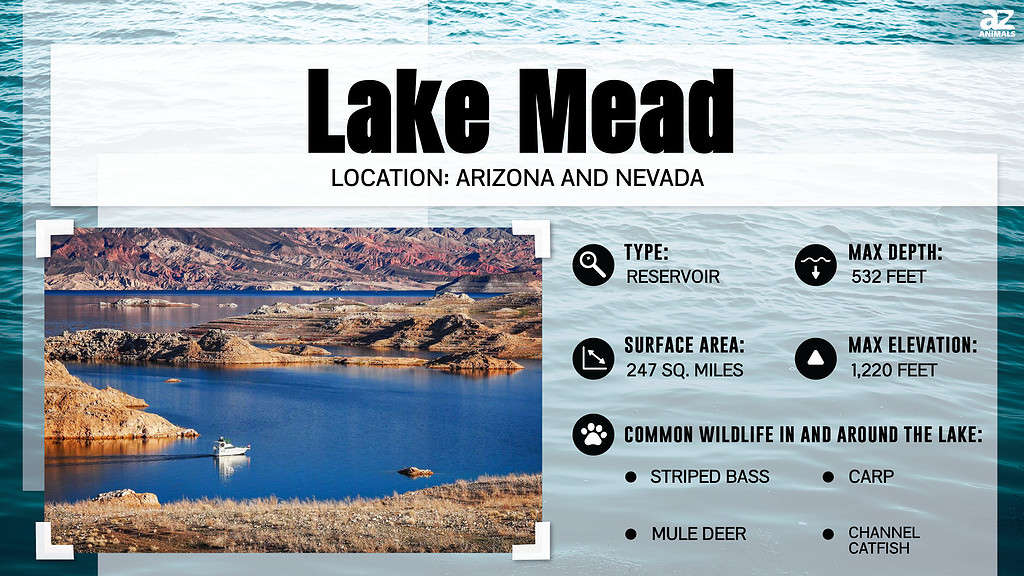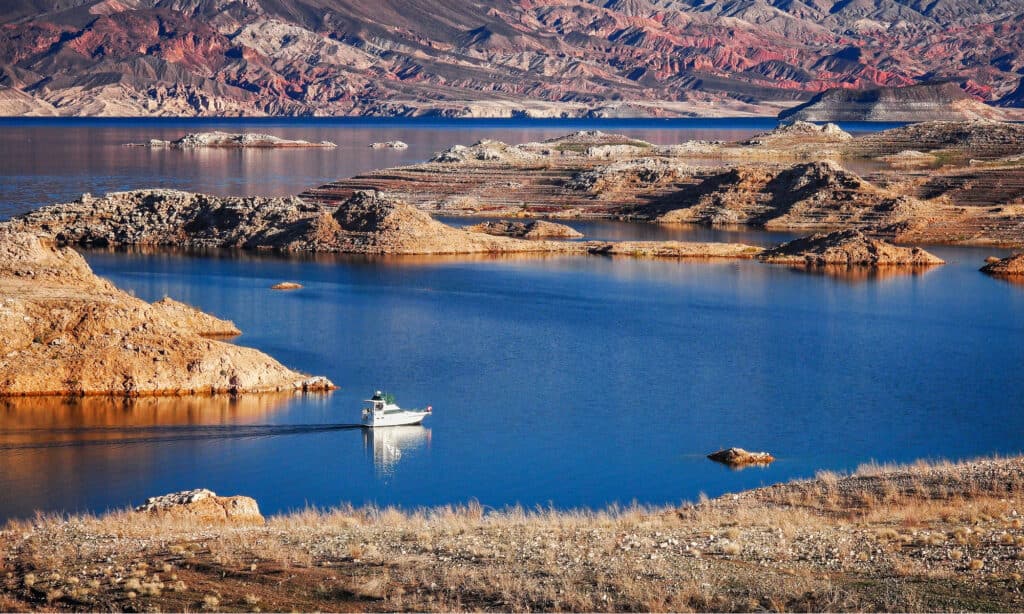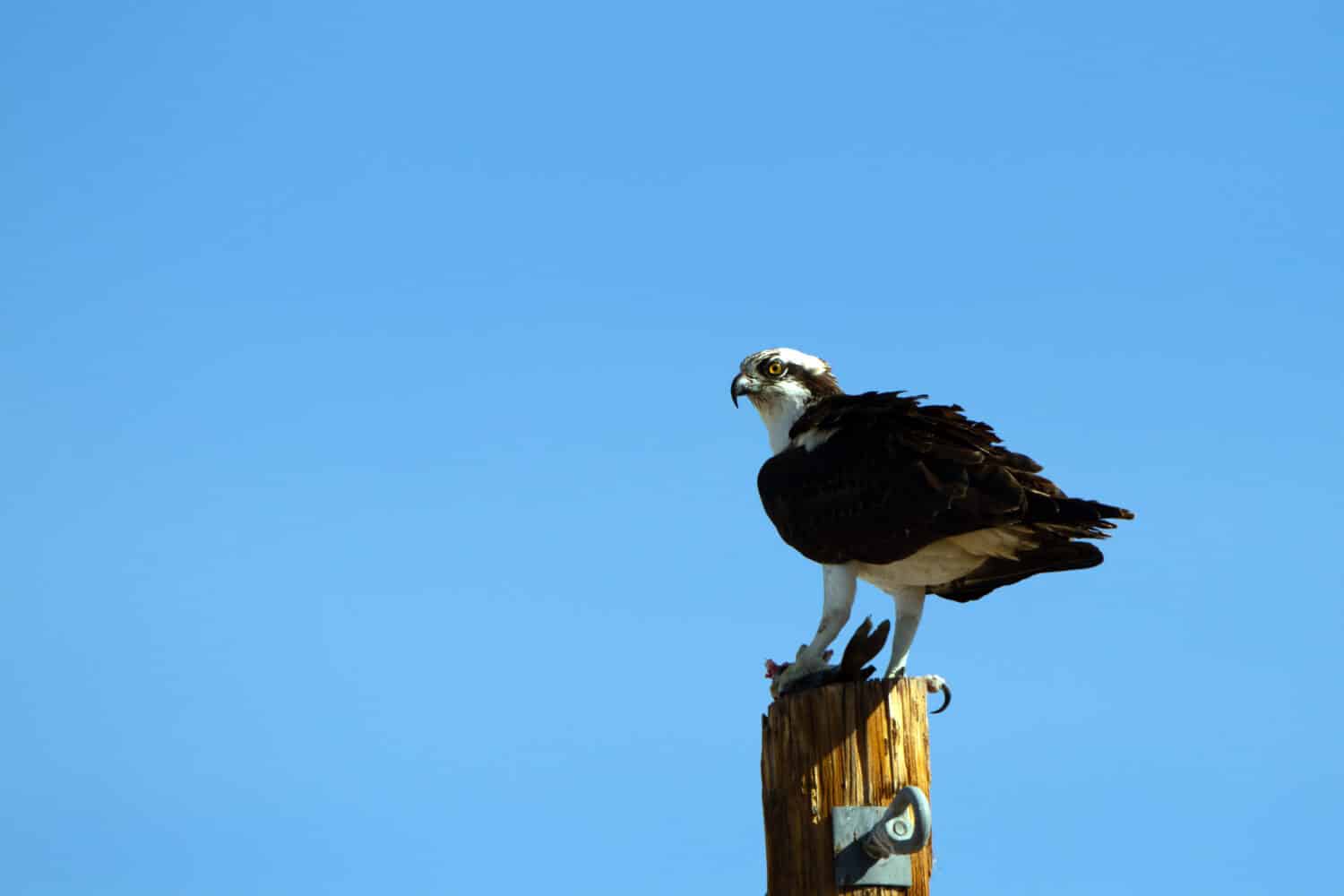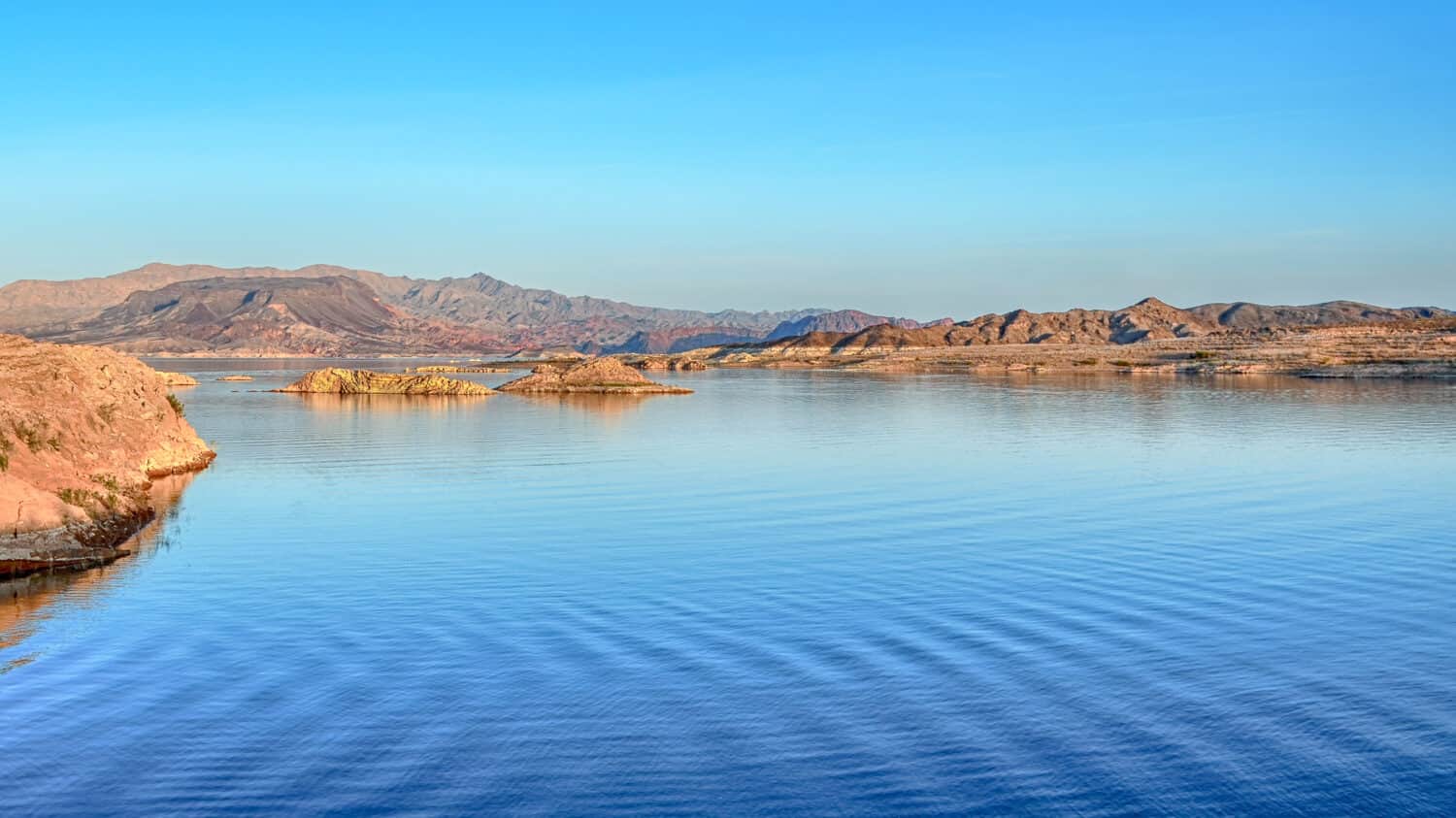
Lake Mead is a vast reservoir on the Colorado River, spanning the states of Nevada and Arizona. Its scenic beauty and abundant recreational opportunities attract numerous visitors each year. However, before diving into its inviting waters, it is crucial to understand what lies beneath the surface. Let’s explore the various aspects of Lake Mead, including water pollution, fish species, and potential hazards like snakes, and ultimately determine whether it is a safe body of water to swim in.

Lake Mead faces challenges with water pollution.
©CrackerClips Stock Media/Shutterstock.com
Water Pollution in Lake Mead
Like many bodies of water, Lake Mead faces challenges related to water pollution. The primary sources of pollution in the lake are nutrient runoff from urban areas and agricultural activities. These nutrients, such as nitrogen and phosphorus, can enter the lake through stormwater runoff and irrigation drainage, potentially leading to water quality issues.
The Southern Nevada Water Authority (SNWA) and other agencies have implemented various strategies to combat water pollution. These include water quality monitoring, stormwater management programs, and wastewater treatment upgrades. By taking these proactive measures, Lake Mead has managed to maintain acceptable water quality levels.
Pollution in Lake Mead is also a cause for concern because it can damage the lake’s aquatic ecosystem. Pollution can directly impact wildlife, such as fish and plants. Additionally, pollutants can affect the food chain by decreasing populations of certain species or altering the balance of predator-prey relationships.
Lake Mead has been found to contain various types of pollutants, including but not limited to the following examples:
- Microplastic
- Endocrine-disrupting chemicals
- Chemicals from agricultural runoff
- Heavy metals and other chemical compounds

One of the most common fish species in Lake Mead is channel
catfish
.
©iStock.com/Jenniveve84
Fish Species in Lake Mead
Lake Mead is renowned for its diverse fish populations, making it a haven for fishing enthusiasts. Among the notable fish species found in the lake are striped bass, largemouth bass, channel catfish, and rainbow trout.
Striped bass, known for their exciting fight and impressive size, are a popular catch in Lake Mead. Largemouth bass, with their elusive behavior and strategic hiding spots, offer an enticing challenge for anglers. Channel catfish, characterized by their prominent barbels and excellent taste, provide a rewarding fishing experience. Additionally, rainbow trout are periodically stocked in the lake, further enhancing the angling opportunities.
From a swimming safety perspective, these fish species do not typically pose direct threats to human well-being. Swimmers need not worry about encountering aggressive or dangerous fish species in Lake Mead. However, it is advisable to avoid swimming in areas where anglers are actively fishing to minimize the chances of accidental encounters with fishing lines or hooks.

Hawks can be aggressive when protecting their nest.
©Martha Marks/Shutterstock.com
Hazards in Lake Mead: Snakes and Other Concerns
Lake Mead is a beautiful and serene lake that offers many recreational activities for visitors. However, its natural setting also presents potential hazards to consider before heading out on the water.
Snakes
Lake Mead’s desert surroundings are home to various snake species, both venomous and non-venomous. Non-venomous snakes, such as gopher snakes and coachwhips, contribute to the region’s ecological balance and generally pose no significant threat to swimmers. However, being cautious and maintaining a respectful distance is important to avoid unintended interactions.
Among the venomous snake species, rattlesnakes are the primary concern in the Lake Mead area. Rattlesnakes play an essential role in the ecosystem but should be treated cautiously due to their venomous nature. To minimize the risk of snake encounters, swimmers should be mindful of their surroundings, avoid tall grass or rocky areas where snakes may seek shelter, and refrain from disturbing or provoking snakes. If you encounter a rattlesnake, do not attempt to handle it; instead, back away slowly and leave the area.
It is important to also remain aware of other dangerous wildlife in the area that may pose a threat, including scorpions and black widow spiders. Scorpions can inflict serious bites that require medical attention, as their venom can cause numbness and weakness. Black widow spiders are usually found in dark, moist areas like wood piles or tree stumps; their telltale red hourglass mark can help you identify them. If bitten by a black widow spider, seek medical attention immediately.
Large Birds and Animals
If eagles, hawks, and seagulls become aggressive while protecting their nests, they may seem intimidating. The region is also home to wildlife such as coyotes, bobcats, foxes, mountain lions, and bears, though they usually do not pose a threat.
Other Hazards
In addition to snakes, there are other dangers in Lake Mead that swimmers should know about. Things like branches, rocks, and used fishing equipment can be dangerous if swimmers touch them. It’s important to be careful, especially when swimming or diving in unfamiliar places and to watch for obstacles under the water.
There may be strong currents in some parts of the lake, especially near where water comes in or goes out. When swimming in these areas, it is essential to be careful and not go beyond your abilities. Learning about the lake’s currents and getting information from park officials or experts about areas with strong currents or dangerous underwater currents is recommended.

Swimming at Lake Mead comes with precautions.
©Steve Lagreca/Shutterstock.com
Is Lake Mead Safe for Swimming?
Swimming is allowed in Lake Mead, but visitors must be aware of the risks. The continuous efforts to keep track of water pollution, upkeep various fish species, and manage potential risks all add to the lake’s overall safety.
To ensure a safe swimming experience, visitors should follow established safety guidelines and recommendations. These include staying informed about water quality conditions, adhering to any posted warnings or restrictions, and being alert for potential hazards like snakes, underwater debris, and strong currents.
By exercising caution, respecting the natural environment, and using common sense, visitors can enjoy Lake Mead’s beauty and recreational opportunities while minimizing potential risks.
Tips to Stay Safe in Lake Mead
When enjoying Lake Mead, taking the necessary steps to ensure your safety and that of others is important. Here are some tips for staying safe while exploring this majestic lake.
- Stay informed of current water quality conditions and any posted warnings or restrictions.
- Be aware of potential hazards like snakes, debris, and strong currents.
- Wear a life jacket when swimming or boating in the lake, and always have one in the boat for each passenger.
- Check weather forecasts before heading out on the lake.
- Bring a first-aid kit with you in case of any accidents or injuries.
- Ensure your boat is equipped with appropriate safety gear, such as oars or paddles, an anchor, and a fire extinguisher.
- Monitor children closely while they are playing near the lake’s shoreline.
- Respect private property and stay within designated recreation areas.
- Avoid polluting the lake by disposing of trash properly and not dumping chemicals or hazardous materials into the water.
- Never first release plants, animals, or fish into unfamiliar habitats without consulting state wildlife agencies.
- Practice catch-and-release when fishing, and use the appropriate lures, baits, and tackle to ensure a safe release.
Attractions Near Lake Mead
There are lots of things to see and do around Lake Mead! You can check out the beautiful Lake Mead National Recreation Area for camping, hiking, fishing, and boating activities. Grand Canyon West has amazing views if you’re up for a short drive. Other nearby spots include Hoover Dam, Valley of Fire State Park, Red Rock Canyon, and the Lost City Museum. And when you’re hungry, there are plenty of restaurants, breweries, and wineries to pick from.
Conclusion
Lake Mead offers a safe environment for swimming and other water activities due to its efforts to reduce water pollution, a variety of fish species, and measures taken to prevent possible hazards. However, it is important to remember that no body of water is entirely risk-free. To ensure a safe and enjoyable experience, following safety guidelines and staying informed about the lake’s conditions is essential. So, dive in and explore the beauty of Lake Mead while keeping in mind the significance of responsible and safe swimming practices.
The photo featured at the top of this post is © iStock.com/Sean Pavone
Thank you for reading! Have some feedback for us? Contact the AZ Animals editorial team.






